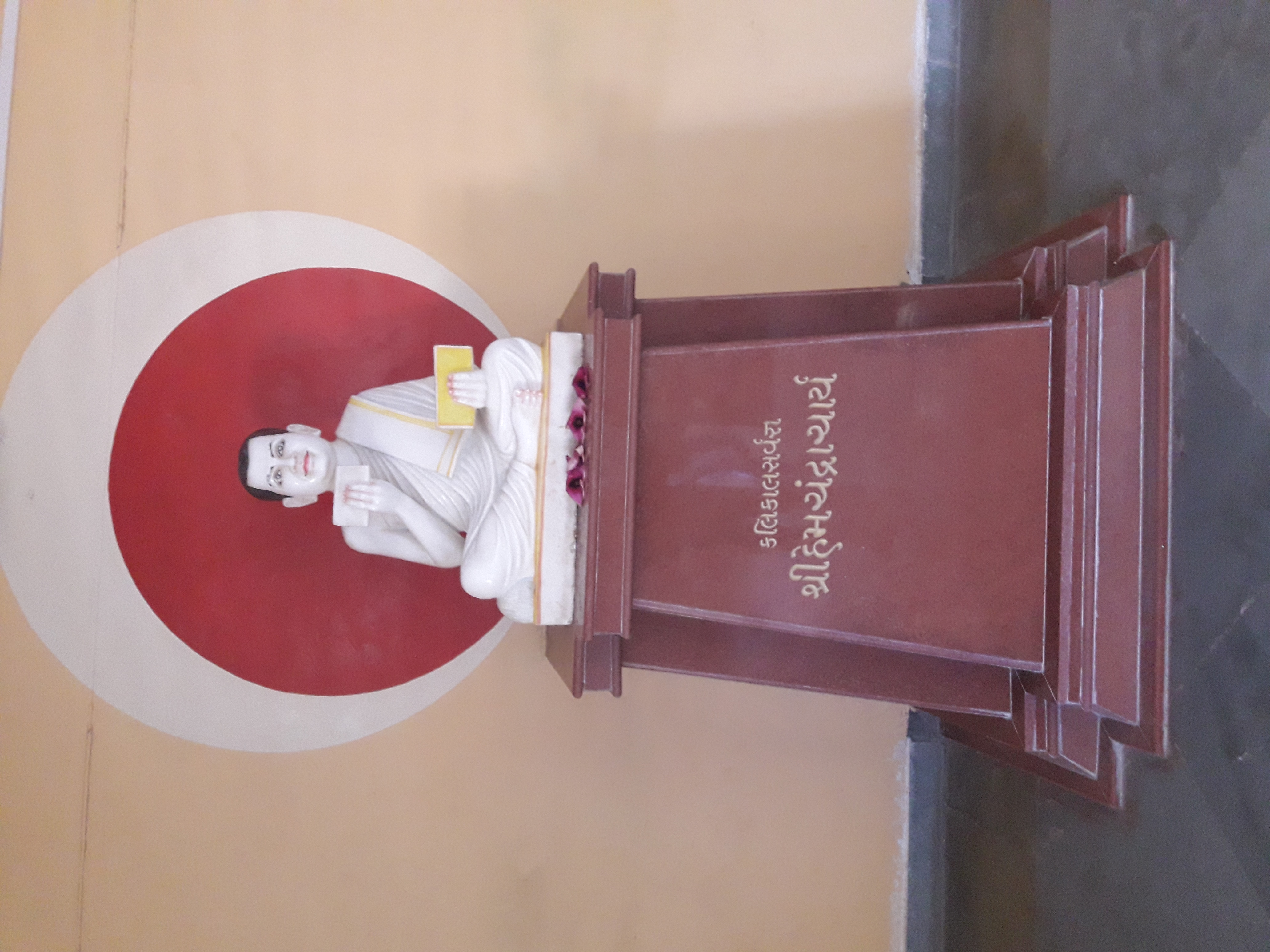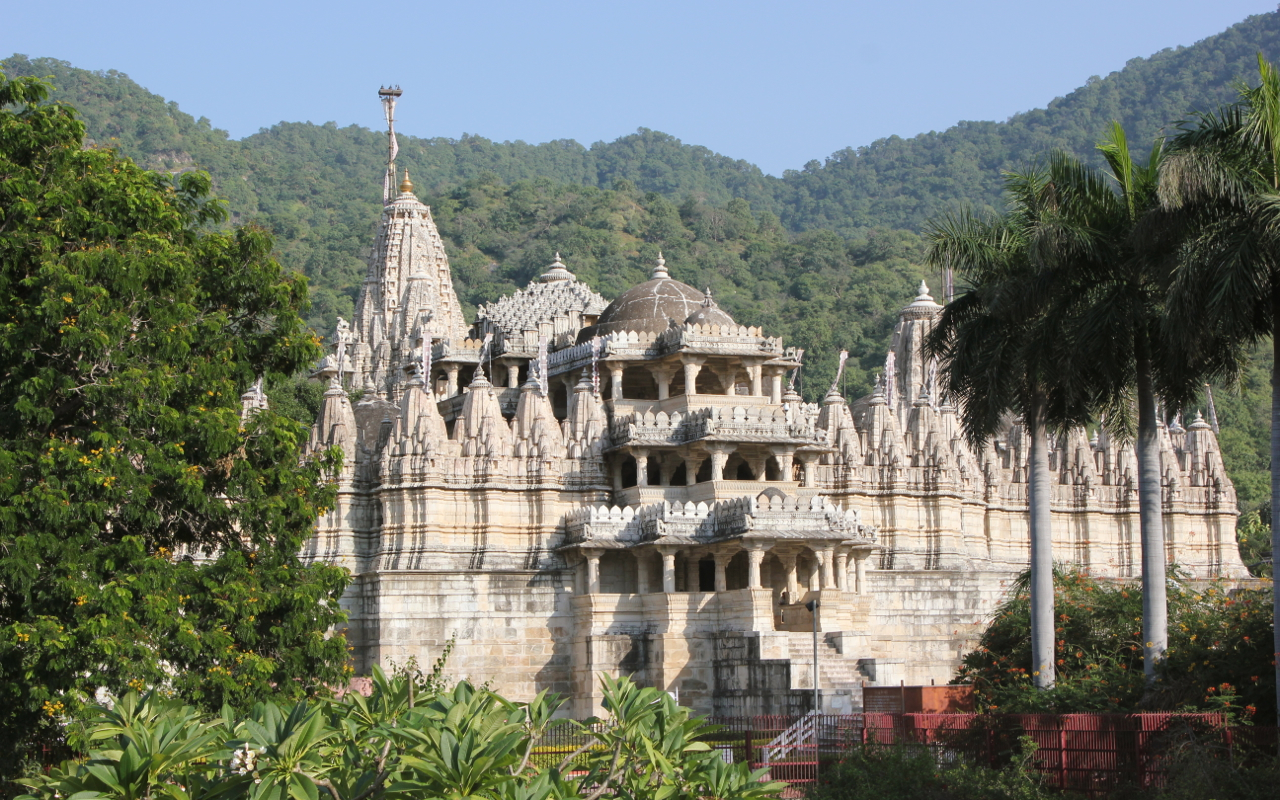|
Nagarparkar Temples
The Nagarparkar Jain Temples () are located in the region around Nagarparkar, in Pakistan's southern Sindh province. The site consists of a collection of abandoned Śvetāmbara Jainism, Jain temples, as well as a mosque heavily influenced by the architectural style of the temples. Buildings in the region date from the 12th to the 15th centuries - a period when Jain architectural expression was at its zenith. Frescoes at the Gori Temple are the oldest Jain frescoes still in existence in the northern regions of the Indian subcontinent. The temples were inscribed on the tentative list for UNESCO World Heritage Site, UNESCO World Heritage status in 2016 as the Nagarparkar Cultural Landscape. Background The region around Nagarparkar forms a zone of transition between the marshes and salt-flats of the Rann of Kutch, and the dry grounds of stabilized sand dunes and nearby pink-granite Karoonjhar Mountains. The region had been mostly covered by the Arabian Sea until the 15th century, thou ... [...More Info...] [...Related Items...] OR: [Wikipedia] [Google] [Baidu] |
Mandap
A ''mandapa'' or ''mantapa'' () is a pillared hall or pavilion for public rituals in Indian architecture, especially featured in Hindu temple architecture and Jain temple architecture. ''Mandapas'' are described as "open" or "closed" depending on whether they have walls. In temples, one or more ''mandapas'' very often lie between the sanctuary and the temple entrance, on the same axis. In a large temple other ''mandapas'' may be placed to the sides, or detached within the temple compound. Temple architecture In the Hindu temple the ''mandapa'' is a porch-like structure through the (''gopuram'') (ornate gateway) and leading to the temple. It is used for religious dancing and music and is part of the basic temple compound. The prayer hall was generally built in front of the temple's '' sanctum sanctorum'' (''garbhagriha''). A large temple would have many ''mandapa''. If a temple has more than one ''mandapa'', each one is allocated for a different function and given a name ... [...More Info...] [...Related Items...] OR: [Wikipedia] [Google] [Baidu] |
Partition Of India
The partition of India in 1947 was the division of British India into two independent dominion states, the Dominion of India, Union of India and Dominion of Pakistan. The Union of India is today the Republic of India, and the Dominion of Pakistan is the Islamic Republic of Pakistan and the People's Republic of Bangladesh. The Partition (politics), partition involved the division of two provinces, Bengal and the Punjab Province (British India), Punjab, based on district-wise Hindu or Muslim majorities. It also involved the division of the British Indian Army, the Royal Indian Navy, the Indian Civil Service, the History of rail transport in India, railways, and the central treasury, between the two new dominions. The partition was set forth in the Indian Independence Act 1947 and resulted in the dissolution of the British Raj, or Crown rule in India. The two self-governing countries of India and Pakistan legally came into existence at midnight on 14–15 August 1947. The partiti ... [...More Info...] [...Related Items...] OR: [Wikipedia] [Google] [Baidu] |
Gachchha
Gaccha, alternatively spelled as Gachchha, is a monastic order, along with lay followers, of the idol worshipping Murtipujaka Śvetāmbara sect of Jainism. Etymology ''Gaccha'' literally means "who travel together". History According to Jain tradition, in the first century, Vajrasensuri established four ''Kulas'', subdivisions within the Swetambara Murtipujaka Jain community, to divide the community during time of drought to disperse them. They were: Chandra, Nirvriti, Vidyadhar and Nagendra. During 1000 to 1300 CE, the Gaccha replaced these ''Kula'' as basic divisions of community. Although some 84 separate gacchas have appeared since the 7th–8th century, only a few have survived, such as the Kharatara Gaccha, Kharatara, the Tapa Gaccha, Tapa, the Achal Gaccha, Achal, the Paichand or Parshwachandra Gaccha, Parshwachandra Gaccha. While the gacchas do not differ from one another in matters of doctrine, they do differ on issues of practice, in particular those practices relat ... [...More Info...] [...Related Items...] OR: [Wikipedia] [Google] [Baidu] |
Shikhara
''Shikhara'' (IAST: '), a Sanskrit word translating literally to "mountain peak", refers to the rising tower in the Hindu temple architecture of North India, and also often used in Jain temples. A ''shikhara'' over the ''garbhagriha'' chamber where the presiding deity is enshrined is the most prominent and visible part of a Hindu temple of North India. In South India, the equivalent term is Vimana (architectural feature), ''vimana''; unlike the ''shikhara'', this refers to the whole building, including the sanctum beneath. In the south, ''shikhara'' is a term for the top stage of the vimana only, which is usually a dome capped with a finial; this article is concerned with the northern form. The southern ''vimana'' is not to be confused with the elaborate gateway-towers of south Indian temples, called ''gopuram'', which are often taller and more prominent features in large temples. It is argued that stylistic aspects seen on Buddhist architecture like the ''stupa'' may have bee ... [...More Info...] [...Related Items...] OR: [Wikipedia] [Google] [Baidu] |
Sirohi
Sirohi is a town, located in Sirohi district in southern Rajasthan state in western India. It is the administrative headquarters of Sirohi District and was formerly the capital of the princely state of Sirohi ruled by Deora Chauhan Rajput Rājpūt (, from Sanskrit ''rājaputra'' meaning "son of a king"), also called Thākur (), is a large multi-component cluster of castes, kin bodies, and local groups, sharing social status and ideology of genealogical descent originating fro ... rulers. The nearest railway station to Sirohi is Sirohi Road railway station. Sirohi got first rank in 33 districts of Rajasthan for "Swachha Bharat Abhiyaan” in year 2014. Geography Sirohi is located at . It has an average elevation of 321 metres (1053 ft). History In 1405, Rao Sobhaji founded the town of Shivpuri on the eastern slope of Siranwa Hill. Shivpuri today lies in ruins. In 1425, Sobhaji's son and successor, Sehastramal (or Sainsmal), founded a fortress on the eastern ... [...More Info...] [...Related Items...] OR: [Wikipedia] [Google] [Baidu] |
Patan, Gujarat
Patan () is the administrative seat of Patan district in the Indian state of Gujarat and is an administered municipality. It was the capital of Gujarat's Chavda dynasty, Chavda and Chaulukya dynasties in medieval times and is also known as Anhilpur-Patan to distinguish it from Prabhas Patan. During the rule of Gujarat Sultanate, it was the capital from 1407 to 1411. Patan was established by the Chavda king Vanaraja Chavda, Vanaraja. During the rule of several Hindu and Muslim dynasties, it thrived as a trading city and a regional capital of northern Gujarat. The city contains many Hindu and Jain temples as well as mosques, dargahs and rauzas. It is a historical place located on the bank of the now-extinct Saraswati River, Gujarat, Saraswati River. Patan has an old market which is quite sizeable and is believed to have been in continuous operation since at least the rule of Vaghelas and gandhis. History Patan was established by the Chavda dynasty, Chavda ruler Vanaraja in the ... [...More Info...] [...Related Items...] OR: [Wikipedia] [Google] [Baidu] |
Hemachandra
Hemacandra was a 12th century () Śvetāmbara Jaina acharya, ācārya, scholar, poet, mathematician, philosopher, yogi, wikt:grammarian, grammarian, Law, law theorist, historian, Lexicography, lexicographer, rhetorician, logician, and Prosody (linguistics), prosodist. Noted as a prodigy by his contemporaries, he gained the title ''kalikālasarvajña'', "the knower of all knowledge in his times" and is also regarded as father of the Gujarati language. Born as Caṅgadeva, he was ordained in the Śvētāmbara, Śvetāmbara school of Jainism in 1110 and took the name Somacandra. In 1125 he became an adviser to King Kumārapāla and wrote ''Arhannīti'', a work on politics from Jaina perspective. He also produced ''Triśaṣṭi-śalākā-puruṣacarita'' (“Deeds of the 63 Illustrious Men”), a Sanskrit epic poem on the history of important figures of Jainism. Later when he was consecrated as ācārya, his name was changed to Hemacandra. Early life Hemacandra was born in Dhand ... [...More Info...] [...Related Items...] OR: [Wikipedia] [Google] [Baidu] |
Tirtha (Jainism)
In Jainism, a ''tīrtha'' ( " ford, a shallow part of a body of water that may be easily crossed") is used to refer both to pilgrimage sites as well as to the four sections of the ''sangha''. A ''tirtha'' provides the inspiration to enable one to cross over from worldly engagement to the side of ''moksha''. Jain ''tirthas'' are located throughout India. Often a ''tirtha'' has a number of temples as well as residences (dharmashala) for the pilgrims and wandering monks and scholars. Types ''Tirtha'' sites include: * ''Siddhakshetra''s or site of ''moksha'' liberation of an '' arihant'' (''kevalin'') or Tirthankaras like Ashtapada Hill, Shikharji, Girnar, Pawapuri, Palitana, Mangi-Tungi and Champapuri (capital of Anga) * ''Atishayakshetra''s where divine events have occurred like Mahavirji, Rishabhdeo, Kundalpur, Aharji etc. * ''Puranakshetra''s associated with lives of great men like Ayodhya, Vidisha, Hastinapur, and Rajgir * ''Gyanakshetra'': associated with famous '' ... [...More Info...] [...Related Items...] OR: [Wikipedia] [Google] [Baidu] |





